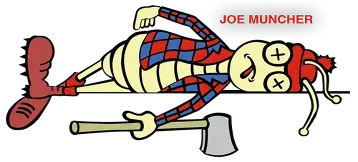
We are proud to be Trade Allied Partners with Mid-American Energy
Rid Your Home Of Carpenter Ants
As Spring approaches, so does the start of ant season. Ants seem to be a never-ending problem that keeps coming back no matter how many ants are eliminated. A single ant hill can have Thousands of ants, including the Queen, and is constantly increasing in numbers. The majority of ant species are harmless but annoying. There are some species of ants. However, that can actually pose dangers to your home. Carpenter ants are common in many areas of the United States, especially in the Midwest. Their habit of living and tunneling in old rotting wood is great for the natural ecosystem, but if allowed to happen in your home can be a significant problem. Carpenter ants in Iowa are large when compared to other ant species. Worker ants are usually around a quarter inch long, and the Queen can grow up to 3/4 of an inch. Carpenter ants in the Midwest are typically black or red & black in color. They have a single node that connects the thorax to the abdomen, making them appear to have a narrow waist.
SIGNS THAT YOU MIGHT HAVE A CARPENTER ANT ISSUE
Habits
Despite what you have heard, carpenter ants do not eat wood. Carpenter ants nest in wood and make tunnels, often called galleries, through the wood. Nests are most often found in rotting, moist, or decaying wood. In homes, carpenter ants are usually attracted by moisture problems that have softened the wood. Common problem areas include porches, roofs, windowsills, and wall studs. They are primarily found in places where they can go undetected. I.e., wall voids.
Signs of an Infestation
Carpenter ants are nocturnal, so you may not see them much around your home. The one time that they are very noticeable is during swarming season. This occurs during the Spring -- March through May when reproductive ants leave the nest to find a mate and start a new colony. Swarmers have wings but do not fly far, so if you see them around your home, chances are good that a nest is close by. During the rest of the year, you may see piles of sawdust-looking material called frass. Carpenter ant Frass in corners of your home or around porches is a sign of carpenter ant activity. Homeowners also hear crackling sounds being made by the colony as they work.
Management
While carpenter ants do not always cause significant structural damage to homes, costly repairs may be needed if left unchecked. Because of the dangers that they pose to wooden structures, professional pest control is often recommended. Finding and treating the nest may be difficult because they are usually found in hard-to-reach places. Control methods can include ant bait traps or insect dust. In wall voids, the ants will take these things back to the colony to eliminate the Queen and, thus, the entire colony. Homeowners can help protect their homes from carpenter ants by removing sources of moisture. This might include unclogging gutters, fixing leaky pipes or faucets, or removing dead and rotting wood from the yard. Carpenter ant work is not general pest control, and carpenter ants should not be treated as such. In order to correctly stop carpenter ants from damaging your home or structure, you should always have a structural pest control professional on your property. If you suspect that you might have a carpenter ant infestation, take action and call a professional exterminator today. The trained technicians at Iowa-Illinois Termite And Pest Control have the knowledge and experience to accurately identify and treat carpenter ants in and around the Quad Cities area. We can also provide regular perimeter treatments around your home to prevent future ants and other household pests. As a family-owned and operated company, you can trust Iowa-Illinois Termite And Pest Control to keep your family safe and pest free. Contact us for all of your pest control needs!
BROWSE OUR WEBSITE
